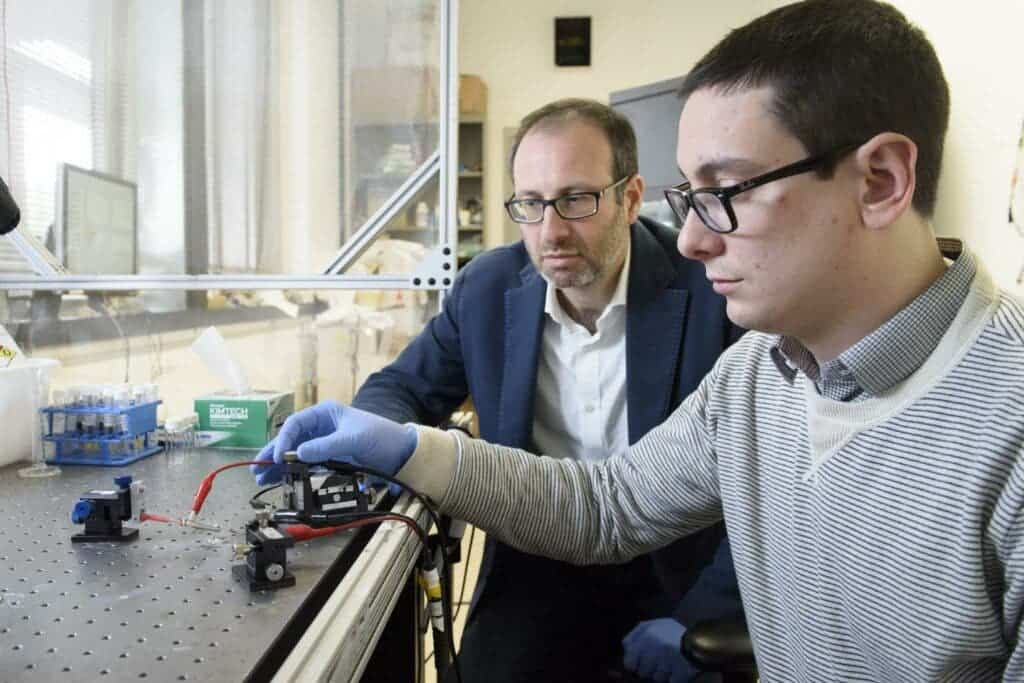
Scientists at Stanford University have devised a biohybrid system that allows artificial synapses to communicate with living brain cells. What sets it apart from other brain-machine interfaces is its ability to respond to chemical signals, rather than electrical cues. As such, this is an important leap forward in scientists’ efforts to mimic the brain’s efficiency and natural learning processes.
Machine synapses and biological brain cells
The researchers built upon their previous work from 2017, when they developed artificial synapses made of two soft polymer electrodes, separated by a gap filled with an electrolyte solution. Experiments later showed that such devices could be connected in arrays, mimicking the way real, biological synapses process and store information.
In the brain, synapses are junctions between neurons, allowing brain cells to communicate with one another by exchanging chemical information in the form of various neurotransmitters, such as dopamine or serotonin.
Neuroscientists believe that one of the reasons why the human brain is so efficient has to do with the ability of synapses to simultaneously process and store information. In contrast, computers store information after it is processed, making them very slow by comparison.
The new hybrid system also employs electrochemistry to allow an array of artificial synapses to communicate with living cells as though they were just another neuron exchanging information with its neighbor.
“This paper really highlights the unique strength of the materials that we use in being able to interact with living matter,” said Alberto Salleo, professor of materials science and engineering at Stanford and co-senior author of the new study.
“The cells are happy sitting on the soft polymer. But the compatibility goes deeper: These materials work with the same molecules neurons use naturally.”
Salleo and colleagues placed living neuroendocrine cells from rats — which release the neurotransmitter dopamine — on top of one the electrodes of the artificial synapse. When neurotransmitters interact with the electrode, a chemical reaction takes place that produces ions, which travel across the synapse trench to the second electrode. The ions alter the conductive state of the electrode, resulting in a permanent change in the connection that simulates how learning occurs in nature.
“In a biological synapse, essentially everything is controlled by chemical interactions at the synaptic junction. Whenever the cells communicate with one another, they’re using chemistry,” said Scott Keene, a graduate student at Stanford and co-lead author of the paper. Being able to interact with the brain’s natural chemistry gives the device added utility.
For now, this is just a proof-of-concept. The researchers do not have any immediate plans or applications in mind for their device since the main focus of the research was to simply show that this is all possible. However, this work may one day lead to a new generation of brain-mimicking computers, brain-machine interfaces, medical devices, and novel research tools for neuroscience and drug discovery.
The findings appeared in the journal Nature Materials.









